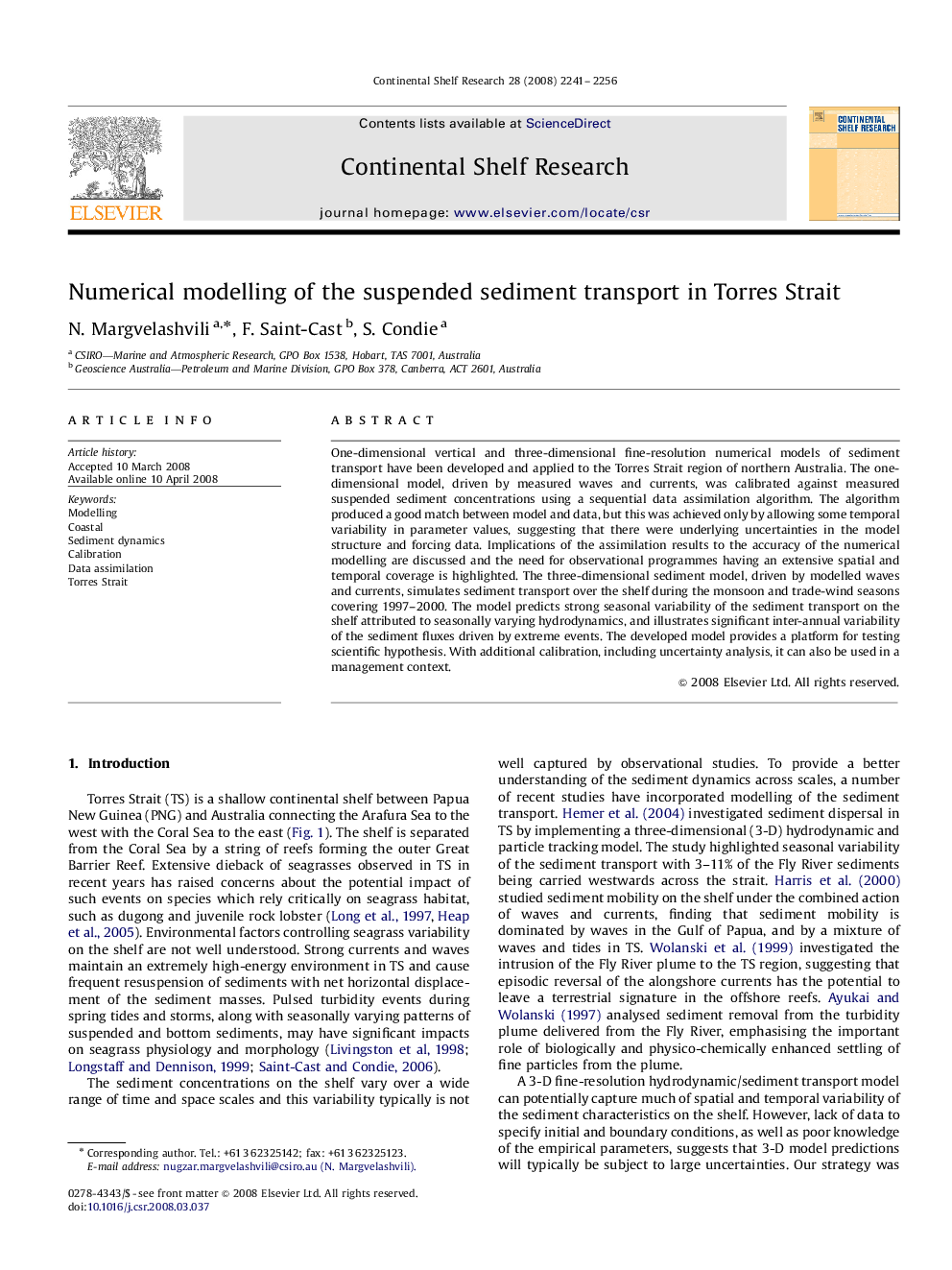| Article ID | Journal | Published Year | Pages | File Type |
|---|---|---|---|---|
| 4533332 | Continental Shelf Research | 2008 | 16 Pages |
One-dimensional vertical and three-dimensional fine-resolution numerical models of sediment transport have been developed and applied to the Torres Strait region of northern Australia. The one-dimensional model, driven by measured waves and currents, was calibrated against measured suspended sediment concentrations using a sequential data assimilation algorithm. The algorithm produced a good match between model and data, but this was achieved only by allowing some temporal variability in parameter values, suggesting that there were underlying uncertainties in the model structure and forcing data. Implications of the assimilation results to the accuracy of the numerical modelling are discussed and the need for observational programmes having an extensive spatial and temporal coverage is highlighted. The three-dimensional sediment model, driven by modelled waves and currents, simulates sediment transport over the shelf during the monsoon and trade-wind seasons covering 1997–2000. The model predicts strong seasonal variability of the sediment transport on the shelf attributed to seasonally varying hydrodynamics, and illustrates significant inter-annual variability of the sediment fluxes driven by extreme events. The developed model provides a platform for testing scientific hypothesis. With additional calibration, including uncertainty analysis, it can also be used in a management context.
